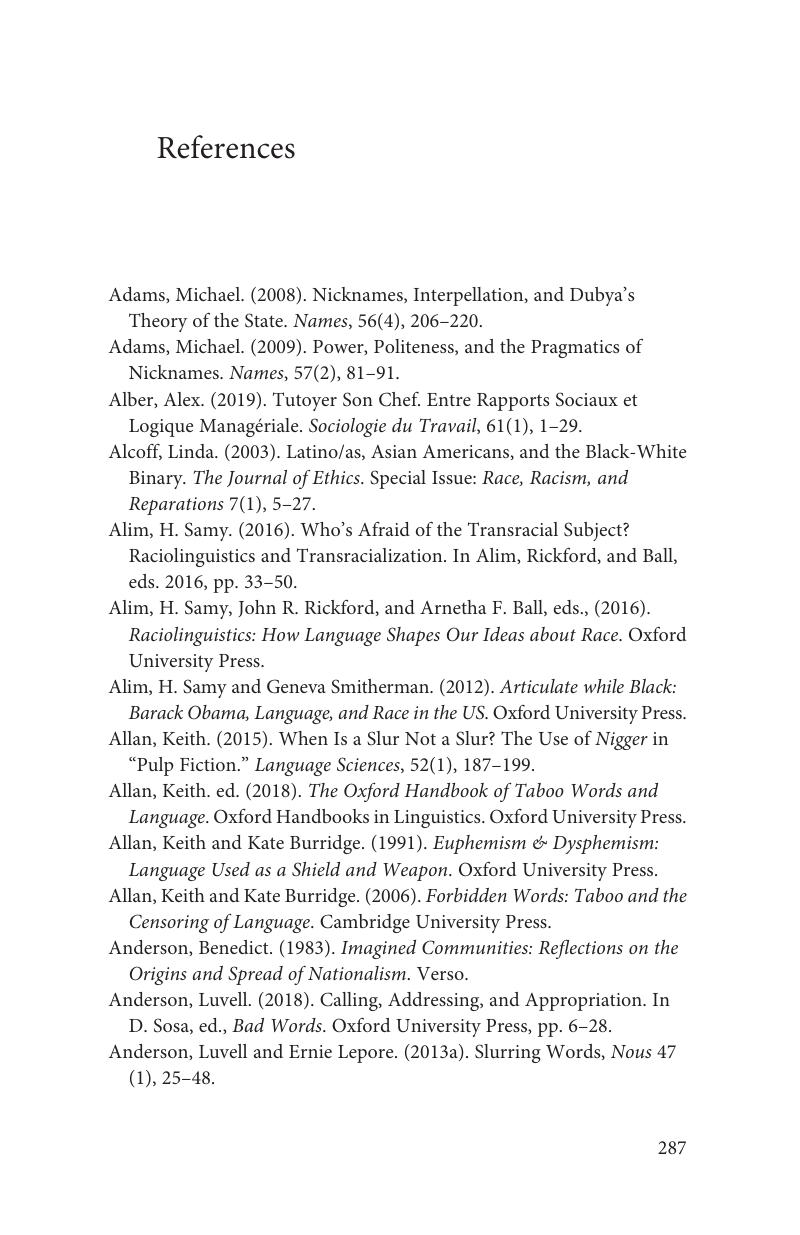Book contents
- Words Matter
- Words Matter
- Copyright page
- Contents
- Figures
- Acknowledgments
- Getting Started
- 1 Labeling: “What Are You, Anyway?”
- 2 Marking/Erasing: “Instead of Saying ‘Normal Americans,’ You Can Just Say ‘Americans’”
- 3 Generalizing: “All the Women Are White, All the Blacks Are Men, but Some of Us Are Brave”
- 4 Addressing: “All Right, My Man … Keep Your Hands on the Steering Wheel”
- 5 Putting Down: “[They] Aren’t People – They’re Animals”
- 6 Reforming/Resisting: “It’s Like a Kind of Sexual Racism”
- 7 Authorizing: “When I Use a Word It Means Just What I Choose It to Mean … [But Who] Is to Be Master?”
- 8 Concluding
- References
- Index
- References
References
Published online by Cambridge University Press: 24 August 2020
- Words Matter
- Words Matter
- Copyright page
- Contents
- Figures
- Acknowledgments
- Getting Started
- 1 Labeling: “What Are You, Anyway?”
- 2 Marking/Erasing: “Instead of Saying ‘Normal Americans,’ You Can Just Say ‘Americans’”
- 3 Generalizing: “All the Women Are White, All the Blacks Are Men, but Some of Us Are Brave”
- 4 Addressing: “All Right, My Man … Keep Your Hands on the Steering Wheel”
- 5 Putting Down: “[They] Aren’t People – They’re Animals”
- 6 Reforming/Resisting: “It’s Like a Kind of Sexual Racism”
- 7 Authorizing: “When I Use a Word It Means Just What I Choose It to Mean … [But Who] Is to Be Master?”
- 8 Concluding
- References
- Index
- References
Summary

- Type
- Chapter
- Information
- Words MatterMeaning and Power, pp. 287 - 303Publisher: Cambridge University PressPrint publication year: 2020



